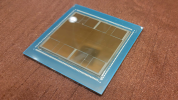it´s coming from other leaker source too but I agree, take it with a grain of salt , especially from MLIDThe usual large caveat that this is coming from Moore's Law Is Dead, but it's always been the obvious path for AMD, just a question of when they would finally take the plunge. A 256-bit LPDDR5 bus would finally alleviate (mostly) the APU bandwidth bottleneck.
A 40CU, 256-bit bus APU with IF cache is far more exciting to me than the next $1500+ GPU frankly, albeit of course depends on price - but powerful APU's could go a long way towards making PC's more price-competitive with consoles . The question is just if there's a market for them, but starting mobile first is definitely where there's a far greater chance for adoption rather than a 250 + watt desktop chip.
If this comes, would also love to see these sold like NUC kits outside of notebooks. You could have a system smaller than an Xbox Series S with 6700+xt performance, perfect secondary PC for the TV.
PS: I would like to know, what difference is between RDNA3 and RDNA 3,5 (RDNA3+) as it´s only exlusively to APU´s iGPU


Last edited:






